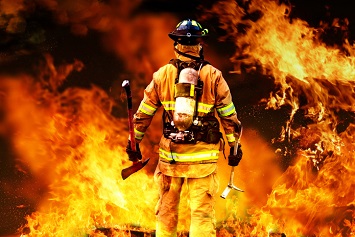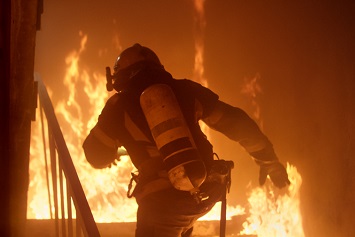Firefighters—whether they are working in burning buildings or burning forests—can experience a dangerous condition called rhabdomyolysis or rhabdo. Rhabdo is the breakdown of damaged muscle tissue that releases proteins and electrolytes into the blood. These substances can damage the heart and kidneys and cause permanent disability and even death. The condition can occur for many reasons, including engaging in the type of extreme physical exertion common with firefighting.
This and more about rhabdo is discussed in two sets of fact sheets—one for structural firefighters, one for woodland firefighters—the National Institute for Occupational Safety and Health (NIOSH) recently released.
“Because exertion in a hot environment is such a fundamental part of the job, fire fighters need to know the signs and symptoms of rhabdo to be able to quickly recognize the potential danger and get medical attention right away if they are not feeling well,” states NIOSH.
Contributing Causes
Elements of fire response as well as firefighting training associated with an increased risk of rhabdo include:
- Carrying loads such as turnout gear, air packs, and firefighting tools that can weigh more than 100 pounds;
- High levels of exertion, such as victim rescue, climbing ladders and stairs with heavy gear, and carrying heavy loads over rugged, steep terrain;
- Prolonged exertion during overhaul (e.g., opening walls to check for smoldering embers);
- Rigorous training and physical fitness tests; and
- Exposure to heat from the fire environment.
Other elements that can increase the risk of rhabdo include some cold and allergy medications; certain antibiotics; dietary supplements such as creatine; and common prescription medications such as statins that lower cholesterol.
“People with no known rhabdo risk factors can get rhabdo,” says NIOSH. “It can happen after activities you have done in the past without a problem. Even firefighters and athletes who are in excellent physical condition can develop it.”

Symptoms
Prominent symptoms of rhabdo are muscle cramps and aches or pains that are more severe than expected with the amount of exertion; inability to complete a workout routine due to feeling unusually tired; and tea- or cola-colored urine. Also, rhabdo symptoms may not appear until several days after the muscle is damaged.
If these symptoms do occur, medical treatment should be sought immediately. Since rhabdo can be confused with dehydration or heat-related illness, the healthcare provider must be informed of the nature of employment. Multiple blood tests for a protein called creatine phosphokinase (also called CK) are the only way to determine if a person has rhabdo.
“Listen to your body!” says NIOSH, adding that if a firefighter experiences any of the symptoms noted above, he or she should:
- Stop the current activity right away, cool down, and start drinking fluids.
- If symptoms occur while at a fire, tell your chief and any on-site emergency medical services personnel about the symptoms.
- If the symptoms start away from work, contact your healthcare provider or go to the nearest medical center immediately.
- Tell the healthcare provider you are a firefighter, and give them NIOSH’s fact sheets.
- Ask to be checked for rhabdo.
“Reporting your symptoms could save your life and your career!” says NIOSH.
NIOSH’s fact sheets include tips to help healthcare providers identify rhabdo and possible complications.
The four fact sheets are available here.

